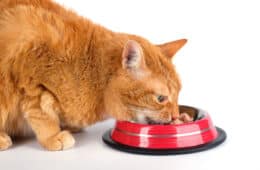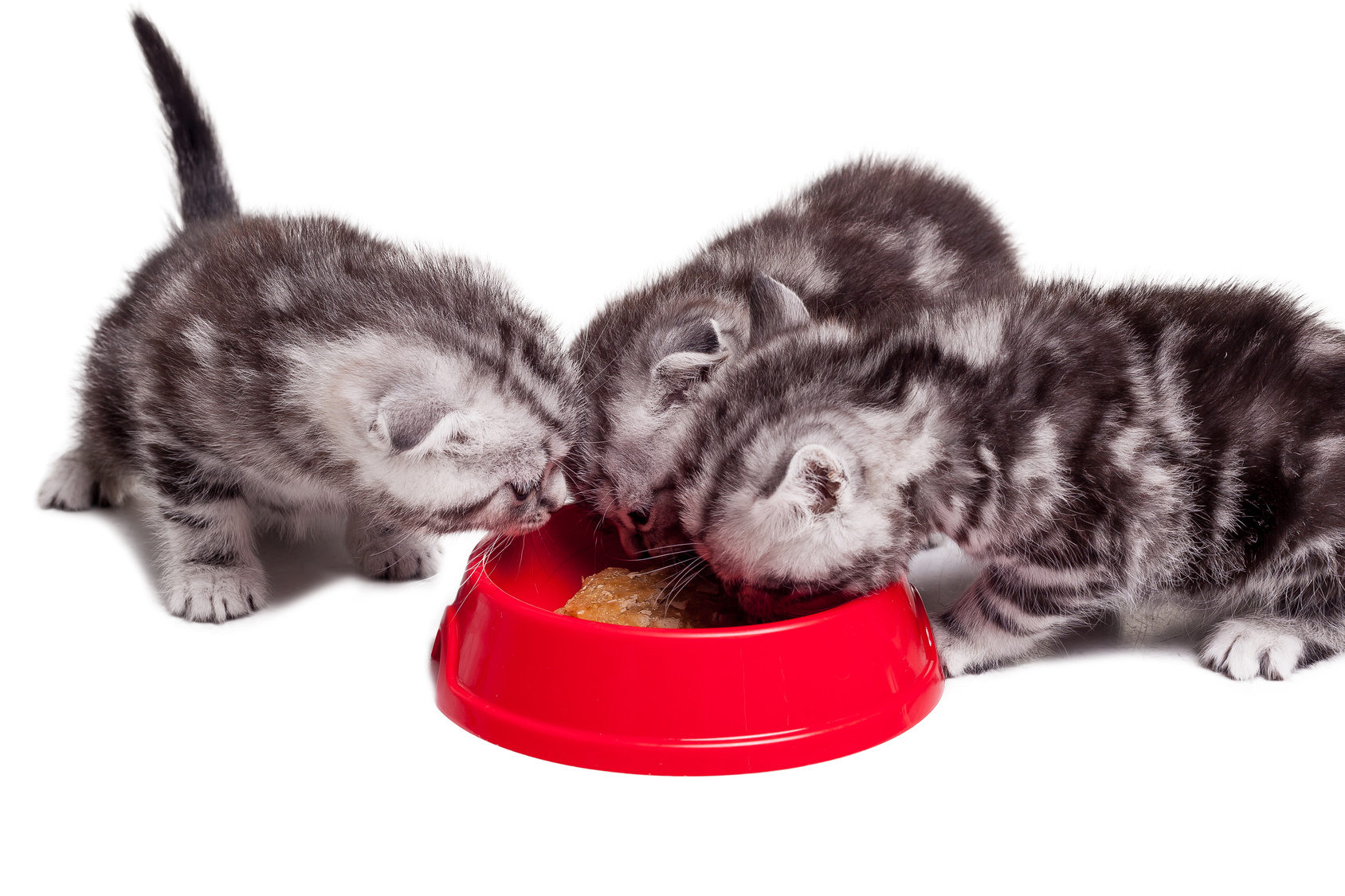There are a number of ways to keep the dog out of the cat’s food—and you should.
Cat food contains more fat and can be harmful to dogs who eat it on a regular basis or overeat during a binge.
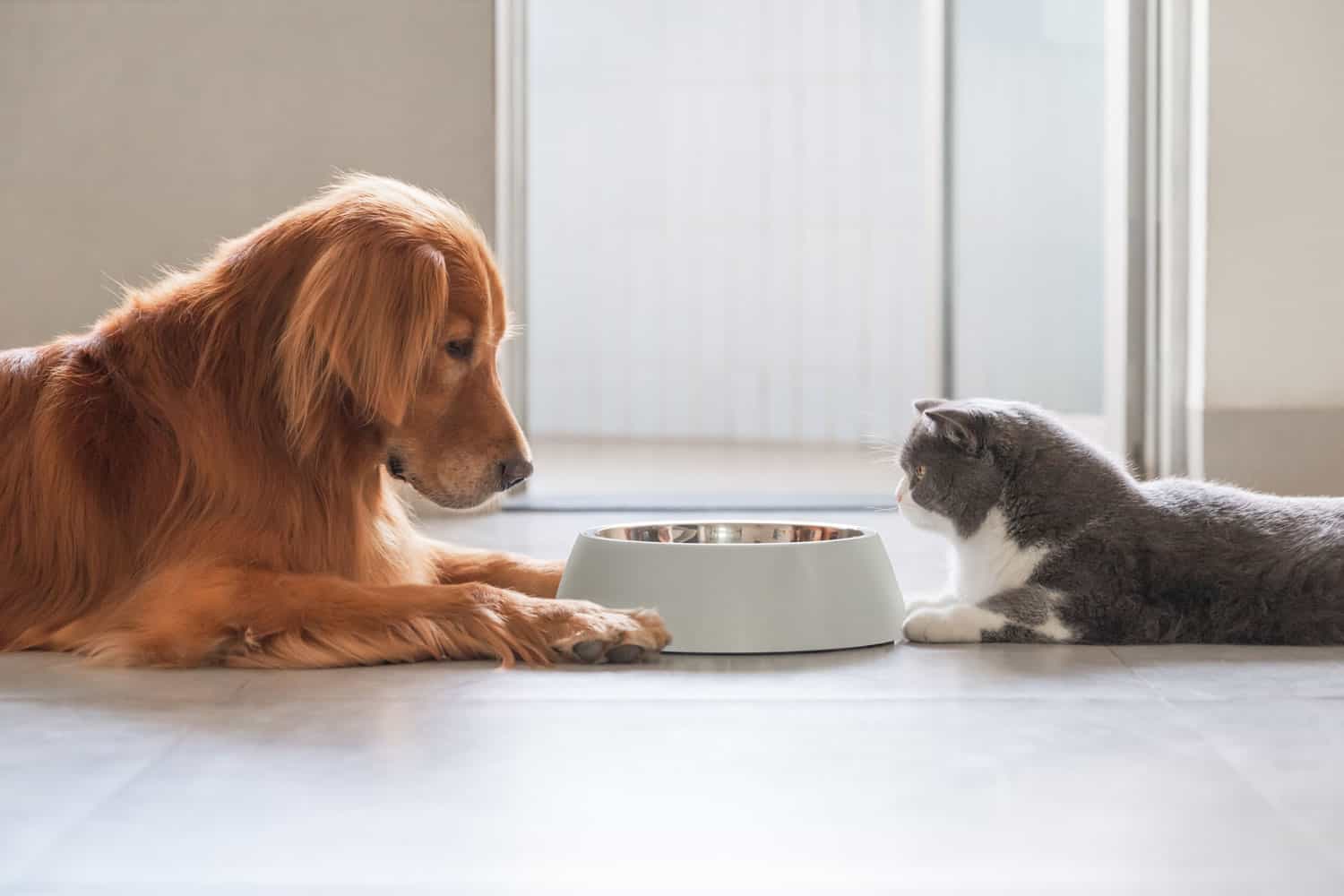
Protecting the cat’s food from your dog
First things first, how to get Fido away from Kitty's food dish.
Training Techniques
Train the dog to “Leave it.” Dogs have a good sense of “mine” and “yours”. They also can learn the word "No" easily. There’s no need for spray bottles or a smack on the butt; dogs catch on to the desired behavior and they want to please.
Elevate the Cat’s Food
If the cat is free-fed and "Leave it" only works when the human is there to say it, consider moving the cat’s food bowl. Cats like to be up high so a countertop, shelf, the top of the washer, dryer or fridge works well.
Barrier Solutions: Exercise Pens and Baby Gates
Exercise pens (the standing wire enclosures for dogs) can be erected around the cat’s food bowl. Be warned, they are movable by a determined dog and may scratch the flooring.
Baby gates work well as barriers unless the dog is particularly agile and fearless (a jumper). Leave about a six inch gap at the bottom so the cat can slip in and out but not so high that you’re stranded, half in and half out of the room when you try to climb over it.
Specialized Cat Doors
Cat doors also work well. Choose a room where there’s space for both the food and water bowls and the litter box (but not too close to each other). The cat can go through a flap that would fit only the smallest dog.
Secluded Feeding Spots
Cats like privacy when they eat. Sometimes an area in the basement or upstairs where the dogs don’t usually go will be the best place for Kitty’s food bowls.
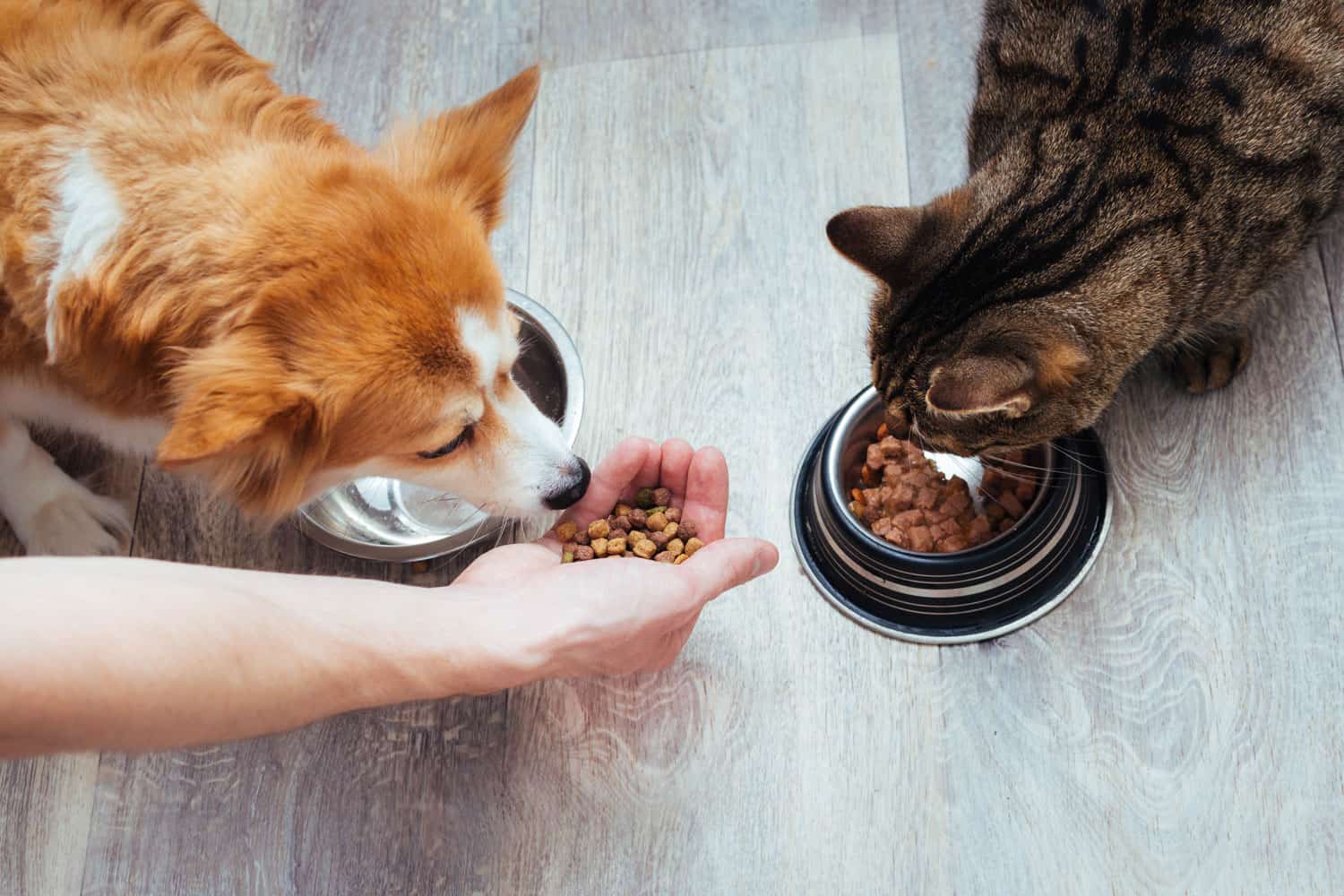
SIGN UP FOR THECATSITE'S EMAIL UPDATES >
Protecting the dog’s food from your cat
Now, let's see how to get Kitty out of the dog's food dish.
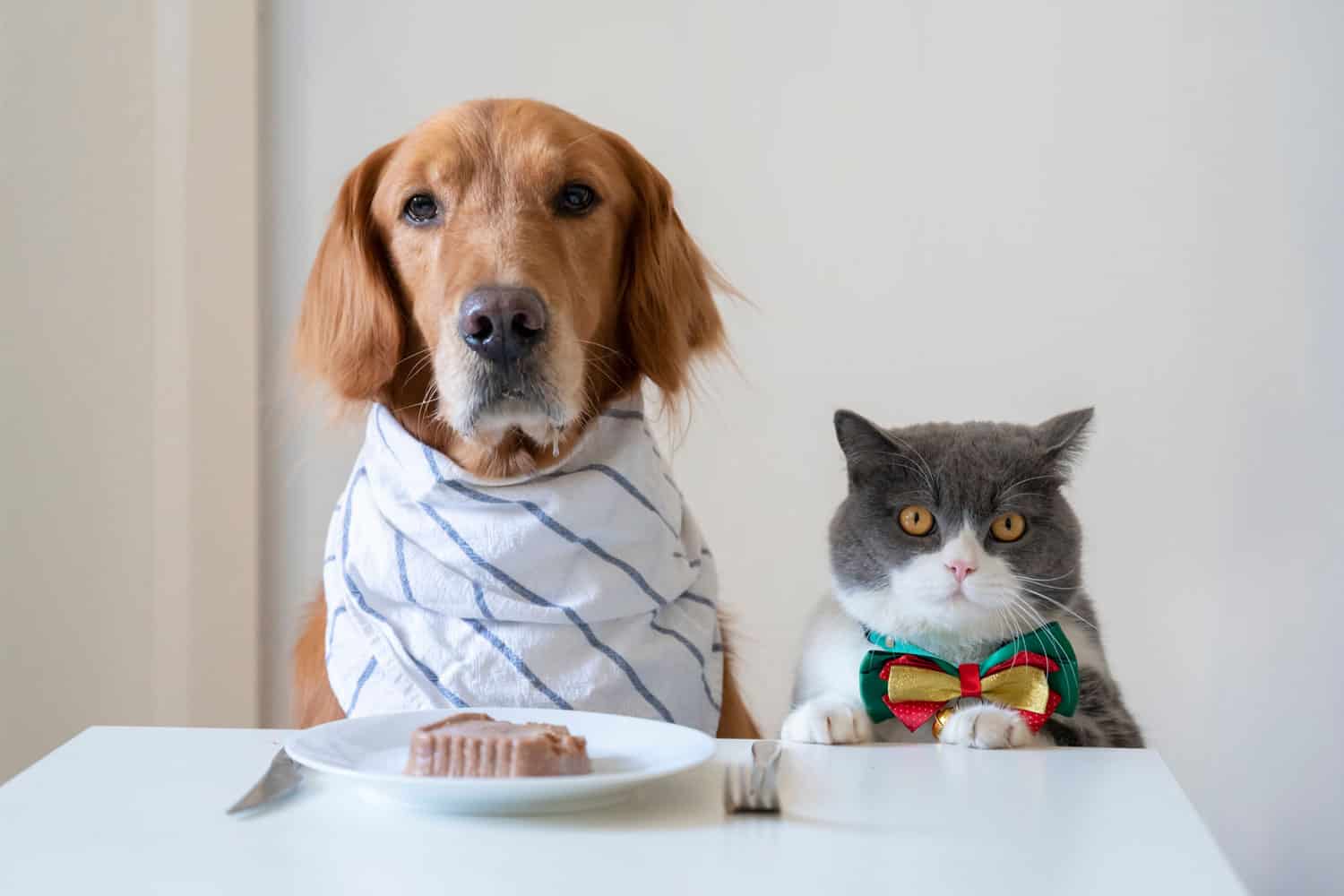
Understanding Nutritional Needs
Training a cat to "Leave it" is an exercise in futility. Letting the cat eat the dog’s food is a recipe for disaster since the nutrients a dog needs are different from those cats require.
Crate Training: A Solution
Feed the dog in his crate so he has some privacy and can eat in peace. All pets should be crate trained in case of emergency and to have a place to call their own.
Outdoor Feeding Considerations
Some dogs prefer to eat outdoors. The porch makes a nice spot to keep a visual on the yard in case of squirrel intruders. Dining out will attract bugs or if food is left over, animals like possums and raccoons.
Setting Time Limits
Give the dog a time limit. Dogs generally eat faster than cats who are still inspecting each crumb long after the dog’s dinner has been gulped down. If there’s food in the dog’s dish after fifteen minutes, pick the dish up and put it away for later.
Demystifying the Forbidden
Give the cat a taste of the dog’s food. It’s not a forbidden treat then but a routine. A very small lick of gravy from wet food is usually enough if it’s done on a regular basis. Dry food is often in larger bites than cats can handle.
Physical Barriers: Exercise Pens and Baby Gates
The exercise pen idea works to keep cats out and let the dog eat without distraction although cats have been known to climb over the pen just to annoy the dog and the human.
The same goes for the baby gate to keep the cat out of the dog’s room.
Joint Feeding Sessions
Sometimes it’s as easy as feeding them together. Each is reluctant to leave his own food vulnerable even if there’s a chance of snagging a bite of someone else’s dinner.
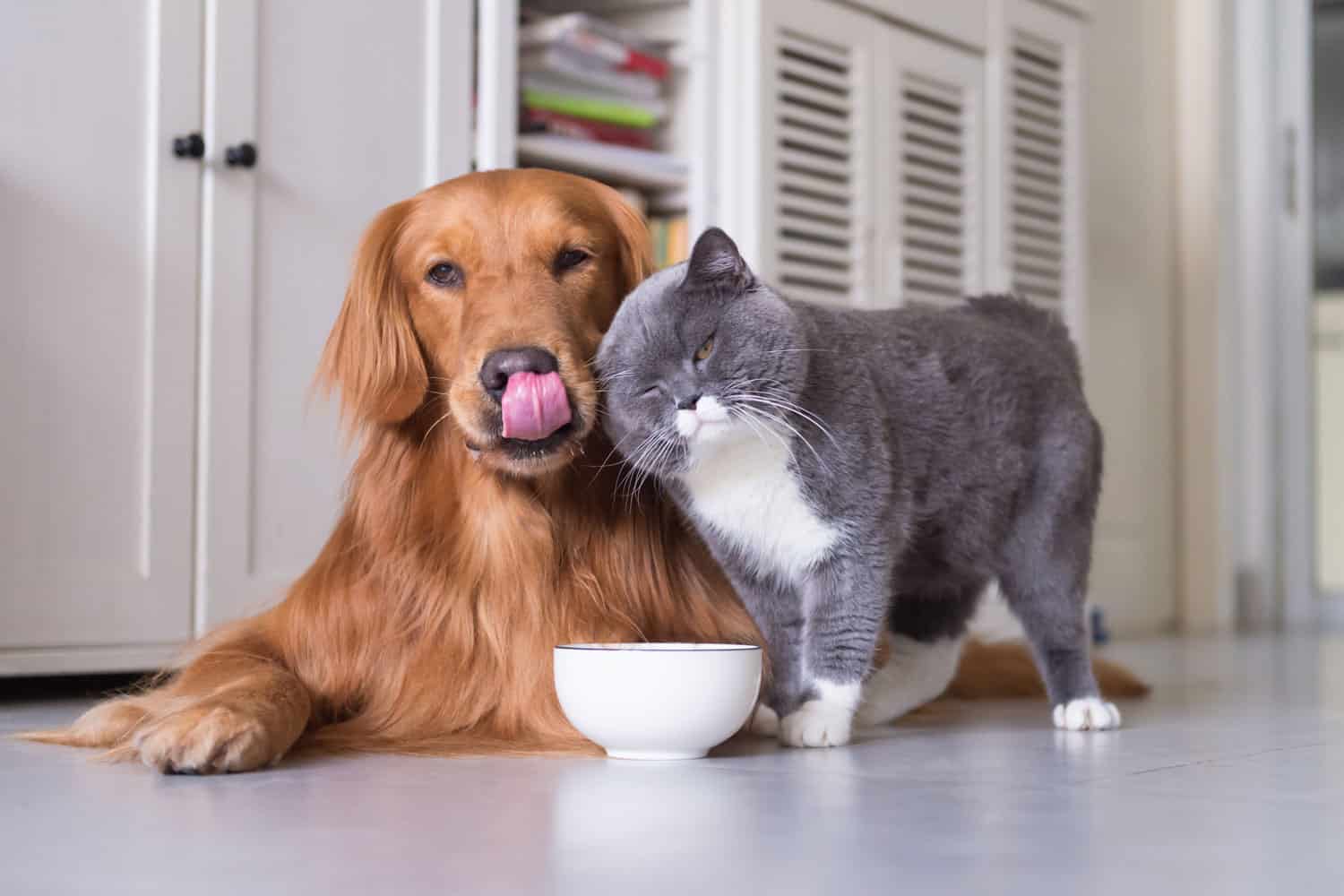
Conclusion: Prioritizing Each Pet's Health
Just remember, there are easy, doable, positive solutions. It’s important to have pets stick with their own food.
It’s a way to avoid arguments and to make sure no one overeats or gets sick from eating the wrong thing.
SIGN UP FOR THECATSITE'S EMAIL UPDATES >
Comments? Leave them using the comment section below. Questions? Please use the cat forums for those!
Note: We may get commissions for purchases made through links on this page.

